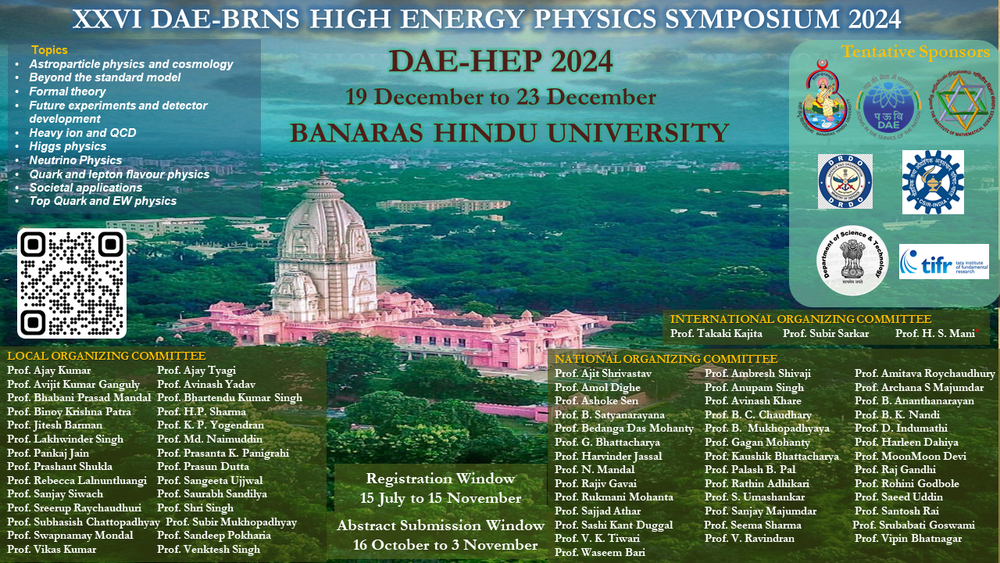Speaker
Description
This study connects low and high-energy CP violations within the biunitary parametrization framework, examining their correlations to bridge theoretical predictions and experimental observations. Through biunitary parametrization, low-energy observables are expressed in terms of high-energy parameters, and qualitative and quantitative analyses are conducted. Constraints from neutrinoless double beta decay ($0\nu\beta\beta$) and neutrino oscillation data are derived for $\theta_R$ and $\phi_R$, enabling a structured examination of the leptogenesis scenario. By considering CP violation as a unifying element across energy scales, we visualize the CP asymmetry parameter for leptogenesis concerning the effective small neutrino mass ($\tilde{m}1$), identifying three potential washout regimes—weak, moderate, and strong—corresponding to $\epsilon_1$ values between $10^{-11}$ and 1. Our quantitative findings suggest Dirac mass values for a common correlation of low and high-energy CP violation to be $m{1} \approx 3 \times 10^6$ eV, $m_{2} \approx 3 \times 10^8$ eV, and $m_{3} \approx 1.9 \times 10^9$ eV, supporting a robust connection between energy scales. This framework strengthens the theoretical basis for CP asymmetry studies and provides specific Dirac mass predictions to guide experimental testing, offering new insights into the mechanisms underlying CP violation. These results enhance our understanding of how CP asymmetry operates in different washout scenarios, advancing a unified perspective on CP violation across particle physics and potentially guiding future experiments in probing the role of CP violation in the early universe.
| Field of contribution | Phenomenology |
|---|

